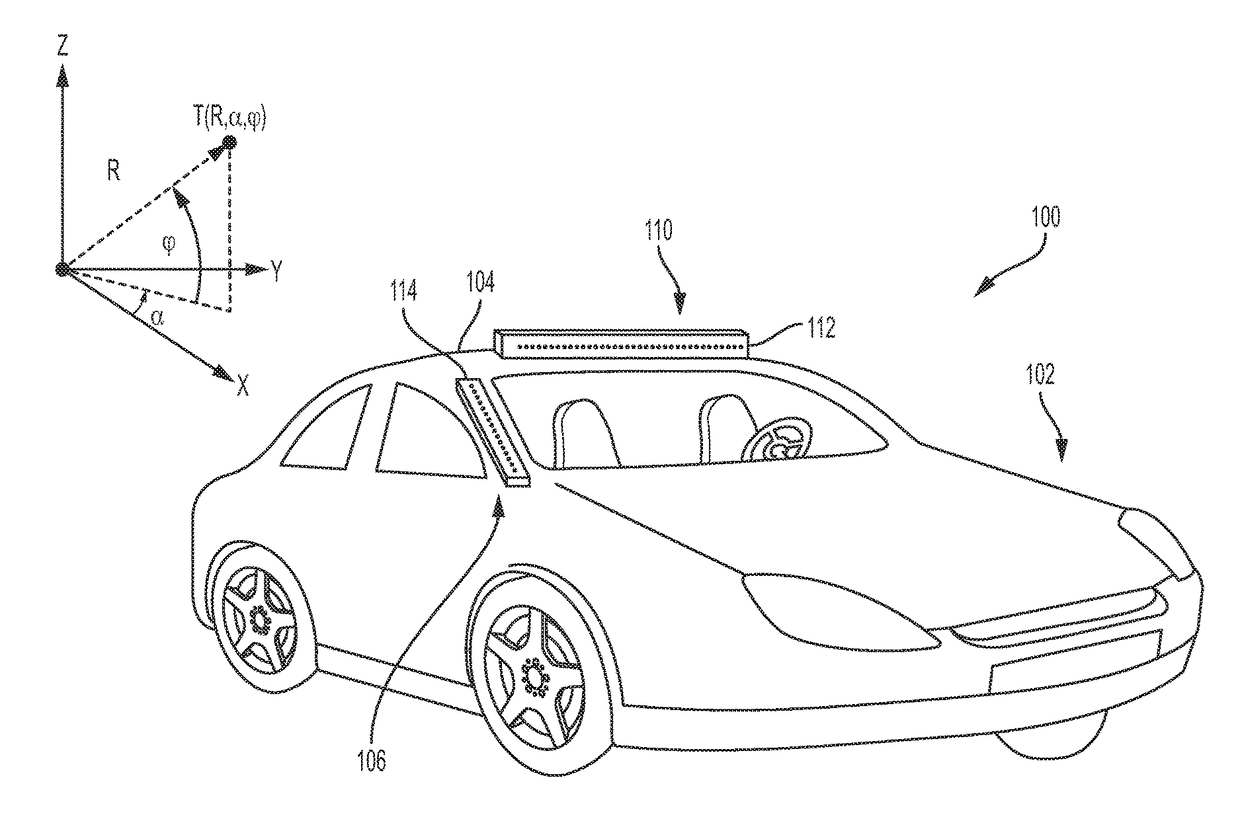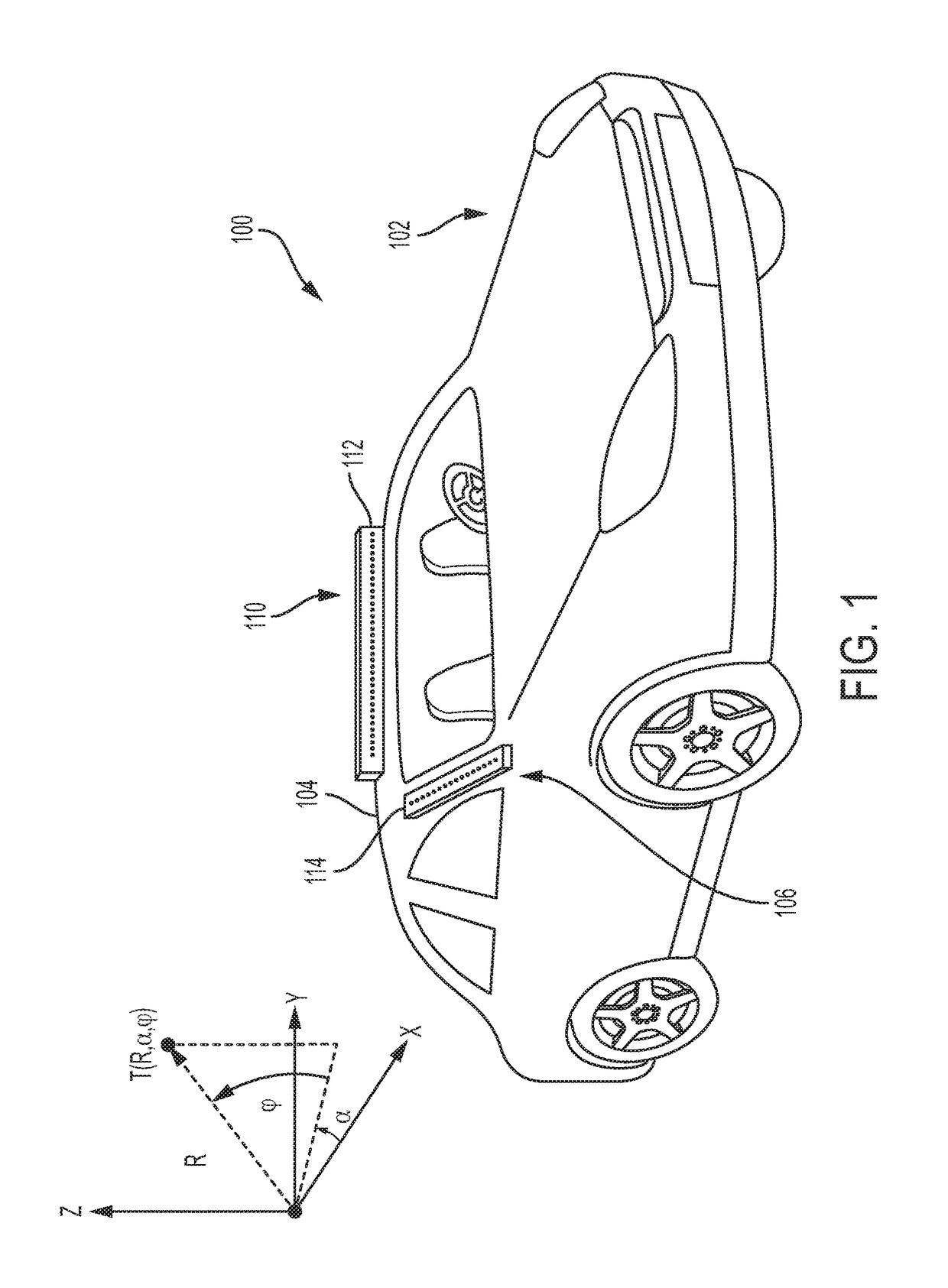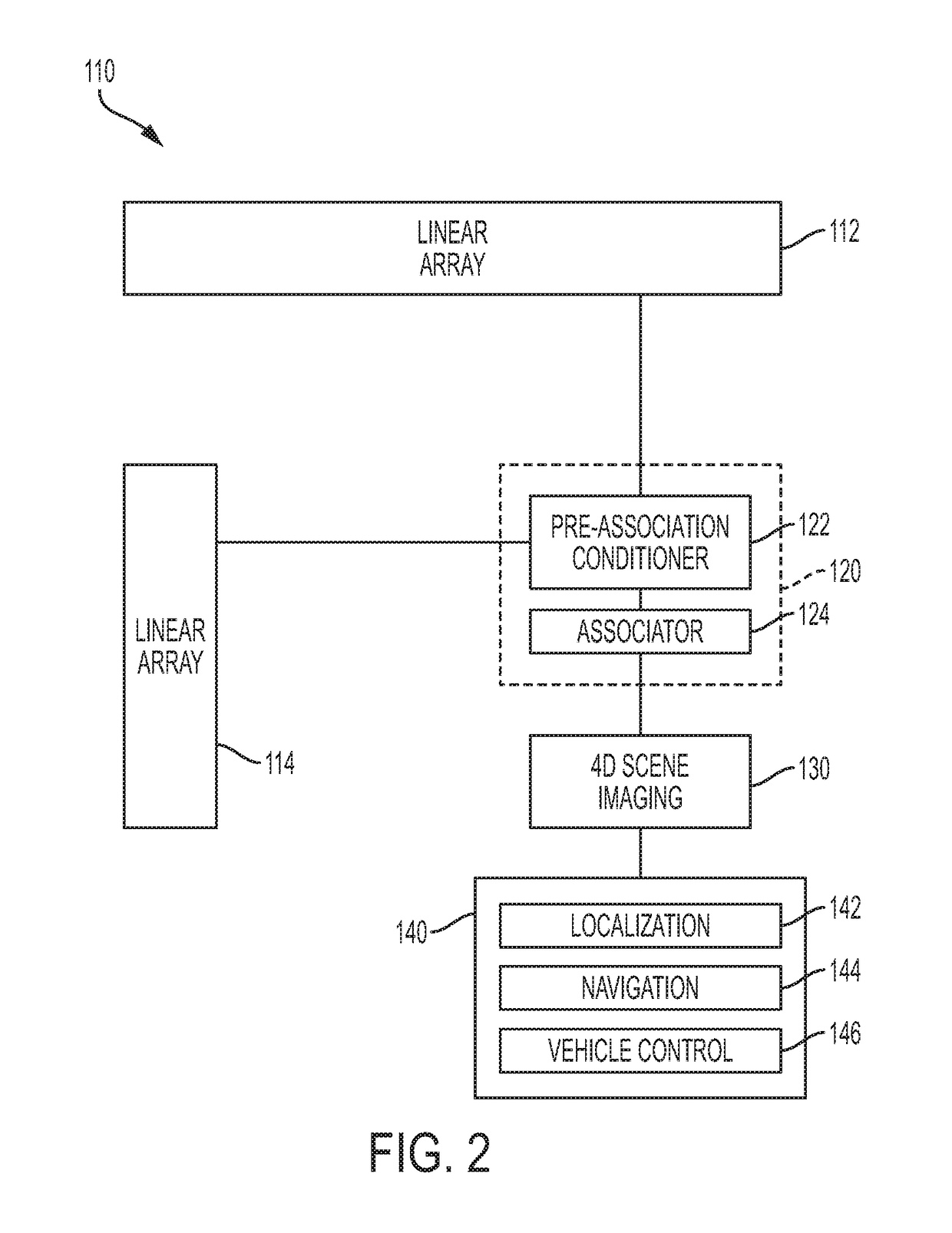Low cost 3D radar imaging and 3D association method from low count linear arrays for all weather autonomous vehicle navigation
a low-cost, autonomous vehicle technology, applied in the direction of reradiation, measurement devices, instruments, etc., can solve the problems of autonomous vehicle systems that are unable to navigate safely, affecting localization, and compromising optical sensors
- Summary
- Abstract
- Description
- Claims
- Application Information
AI Technical Summary
Benefits of technology
Problems solved by technology
Method used
Image
Examples
Embodiment Construction
[0044]A high-definition radio-frequency (RF) domain imaging sensor for use by autonomous vehicles is disclosed in the exemplary embodiments. In an exemplary embodiment, the high-definition RF domain imaging sensor can be a 4D (3D and Doppler velocity) high definition RF radar system that detects objects to image and / or interpret a scene in both visually clear and opaque weather, as well as when road surface and other features are obscured by precipitation or other adverse conditions. Real time filtered data obtained from the RF radar system also provides sufficient resolution for both localization and navigation of an autonomous vehicle in dense urban environments when GPS is unavailable or compromised. In some embodiments, the high-definition RF radar system's outputs can be further integrated with other traditional autonomous vehicle sensors, including, but not limited to: GPS / INS, cameras, Lidar, ultrasound, wheel encoders, and / or other known conventional vehicle sensors, to perm...
PUM
 Login to View More
Login to View More Abstract
Description
Claims
Application Information
 Login to View More
Login to View More - R&D
- Intellectual Property
- Life Sciences
- Materials
- Tech Scout
- Unparalleled Data Quality
- Higher Quality Content
- 60% Fewer Hallucinations
Browse by: Latest US Patents, China's latest patents, Technical Efficacy Thesaurus, Application Domain, Technology Topic, Popular Technical Reports.
© 2025 PatSnap. All rights reserved.Legal|Privacy policy|Modern Slavery Act Transparency Statement|Sitemap|About US| Contact US: help@patsnap.com



